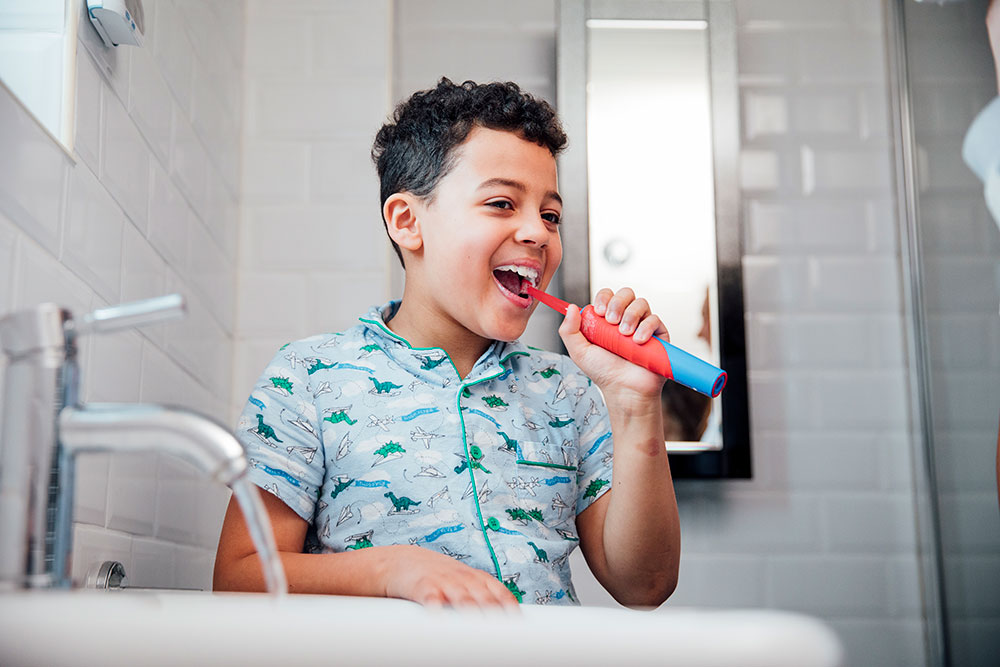AN OUNCE OF PREVENTION...
Preventative steps and tips for better oral health.
TIP ONE: Encourage a healthy diet and lots of H20
Frequent ingestion of sugars and other carbohydrates (eg, fruit juices, acidic beverages) and prolonged contact of these substances with teeth are particular risk factors in the development of cavities. When thirsty, encourage your child to drink water and limit the consumption of juice. Small children who regularly drink juice should drink from a cup. (ie, not a bottle or sippy cup)
Night time bottle feeding with juice, repeated use of a sippy or no-spill cup, and frequent in between meal consumption of sugar containing snacks or drinks (eg, juice, formula, soda) increase the risk of cavities. It is not so much the amount of sugar but the frequency and exposure to sugar that has been shown to cause cavities.
TIP TWO: Teach your kiddos effective oral hygiene
Brushing begins at infancy. Do not wait until your child has all their teeth to begin brushing. The Academy of Pediatric Dentistry recommends using no more than a smear or rice-size amount of fluori-dated toothpaste for children less than three years of age and no more than a pea-size amount of fluoridated toothpaste is appropriate for children aged three to six.
Around 70% of all cavities detected are located in between teeth. For that reason flossing is recommended, especially for areas that have closed or tight contacts. Brushing and flossing can clean teeth of plaque and debris and prevent the buildup of harmful, cavity-causing bacteria. Wiping an infant's gums clean with a wet cloth in the first months after birth can help set the stage for good oral hygiene even before teeth emerge. Once tooth brushing begins, it's important to brush twice each day, a habit that should continue through childhood and into adulthood.
Parents should begin to brush a baby's teeth as soon as the first one emerges, typically after 4 months of age. A soft-bristled brush is appropriate for babies and young children, especially while a baby is teething and their gums are tender. As soon as two adjacent teeth come in, it's time to start flossing. Flossing once daily in a "c-shape" around both sides of each adjacent tooth will help clear out debris and buildup from hard-to-reach areas and promote healthy gums.
For effective brushing, the National Institute of Health (NIH) recommends electric toothbrushes over their manual counterparts. These can also make brushing more fun, and help kids brush for a sufficient amount of time thanks to built-in timers. Any electric toothbrushes should have the American Dental Academy (ADA) seal of approval on the label to ensure that these brushes are soft and appropriate for children.
TIP THREE: Oral Hygiene Safety Information
The AADP recommends that for young children (up until age 5), parents should dispense toothpaste and make sure that children are spitting it out afterward to avoid ingesting too much fluoride. A slow buildup of fluoride in the body may lead to fluorosis, which is a usually mild condition that causes slightly discolored permanent teeth. A pediatric dentist can determine if a child is receiving too much (or too little) fluoride, and make recommendations accordingly.
The choice in toothbrushes and toothpaste also matters for safety. Toothbrushes should have a small head and a larger handle. And it's important to find toothpaste labeled with the ADA seal of approval; some toothpaste can include ingredients that are harsh for developing teeth.
Safe techniques of brushing and flossing should be practiced to eliminate discomfort and promote good oral health. Tooth or gum trauma can occur from using a hard-bristled toothbrush or by brushing or flossing too vigorously. A pediatric dentist can help both parents and children master good brushing and flossing techniques to make sure that these habits are as pleasant and effective as possible.




